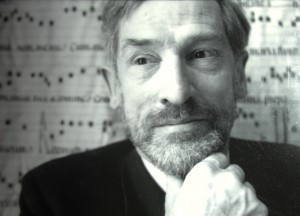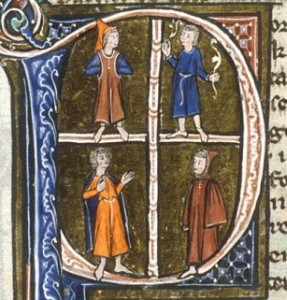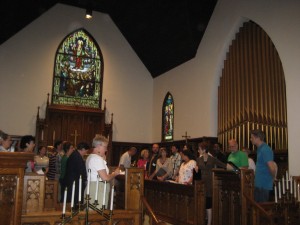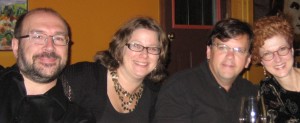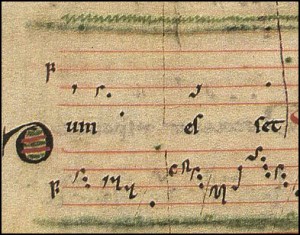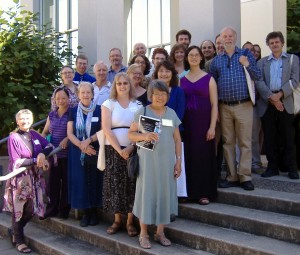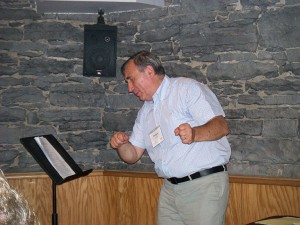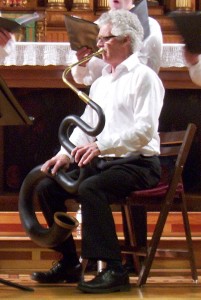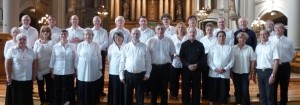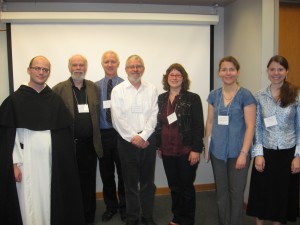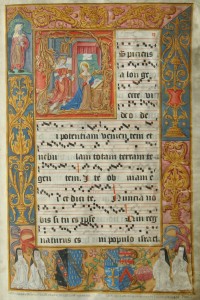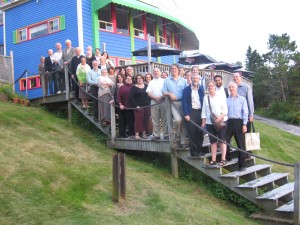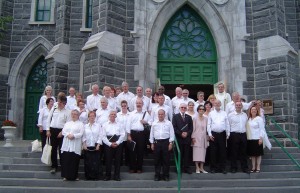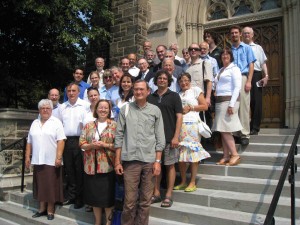IGC/GIC Colloquium 2023
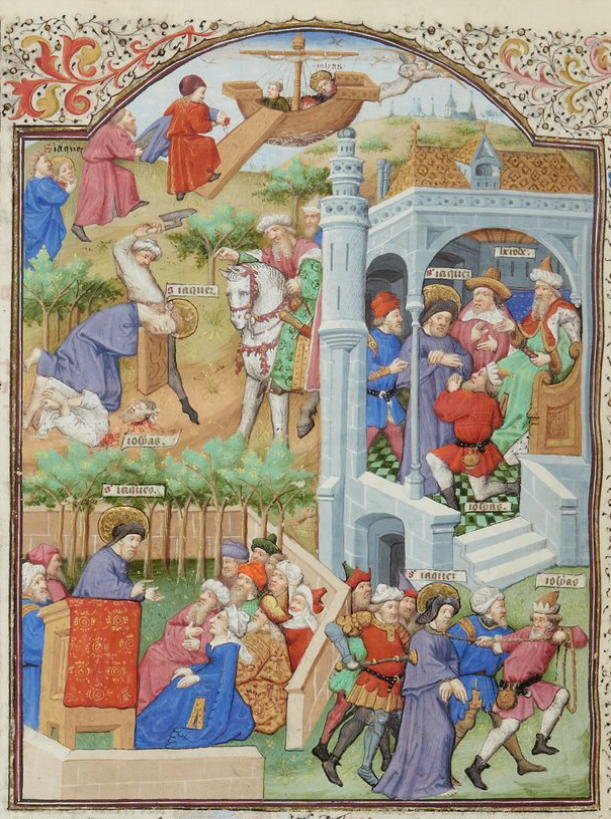
IGC/GIC Colloquium 2023
The Feast of Saint James According to the Use of York
July 24-25, 2023
St. George’s Church, 134 Emerson Street, Hamilton, Ontario
IGC/GIC is pleased to announce our next Colloquium featuring the full liturgy for the Feast of St. James according to the Use of York! We will observe all the hours of the Divine Office and the Mass. We plan to have two lectures.
Registration fee will include the IGC/GIC membership fee and the full package of texts, music and English translations in spiral bound hard-copy: $50 regular; or $40 low income.
Full package of texts, music, and English translations-free-in pdf form HERE.
English translations only-free-in pdf form HERE.
The conference site is conveniently located close to McMaster University, public transportation, hotels and restaurants.
Register and pay here –
This mini-festival will be a celebration of Gregorian Chant in the English tradition. We will observe all the hours of the day and mass.
Preliminary Schedule
Monday, July 24:
14:00 Registration
14:30 Rehearsal for Vespers, Compline, and Mass
16:00 Vespers and Compline
17:00 Dinner on your own
19:00 Lecture: Prof. Brian Butcher (McGill University): Gregorian chant and Theology
20:00 Rehearsal for Mass
Tuesday, July 25:
7:00 Matins and Lauds
9:15 Prime, Chapter, Terce, Sext
10:45 Break
11:00 Mass, None
12:00 Lunch at the church
13:30 Rehearsal for Vespers and Compline
14:45 Lecture: Fr. John-Mark Missio (St. Augustine’s Seminary, Toronto): 18th-Century Dies Irae alternatim chants from the St.Mary’s Basilica Library, Halifax
15:45 Annual General Meeting of GIC
17:00 Vespers and Compline
18:30 Banquet Valentino’s Restaurant 824 King St West Hamilton, ON
20:00 End of Conference
For more information, please contact William Renwick at renwick@mcmaster.ca
St. Benoit-du-Lac 2017
August 10-13, 2017
Toronto 2016 Report
August 11-14, 2016.
Saint Augustine’s Seminary, Toronto
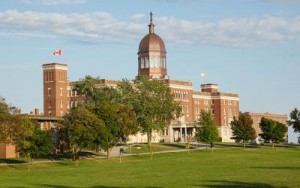
52 devotees of Gregorian chant gathered for four days for the 2016 IGC/GIC Colloquium at the magnificent St. Augustine’s Seminary on the Scarborough Bluffs, August 11-14. The conference included daily Lauds (Sarum), Vespers and Compline (Modern Roman). Rehearsals were led by William Renwick and Jean-Pierre Noiseux.
Featured speaker, Adam Bartlett, led the group through the chants of the Mass, setting forth an interpretive approach based upon a three-fold priority of 1) text, 2) modal laws (based on the structural principles of Heinrich Schenker), and 3) neumatic semiology. We began with the simplest responses on the first day and worked up through the ordinary towards the most challenging chants of the Gradual and Offertory.
Friday evening featured a concert led by Peter Drobac and Katherine Hill, which explored a great diversity of eastern and western chant, in particular delving into unusual and less frequented chant items. A variety of drones and ancient instruments lent colour and richness to the magnificent acoustics of the chapel.
Paper sessions, organized by Kate Helsen, were in honour of Andrew Hughes, and took inspiration from his work. The paper sessions opened with a brief review of the life and work of Andrew Hughes by Dr. Helsen.
The paper sessions offered a good cross-section of current chant research: detailed neumatic analysis (Emily Loeffler), issues of melodic citation and borrowing (Innocent Smith, William Renwick), corpus analysis and edition (William Renwick), and problems linked to fragments and notationless sources (Pascale Duhamel, Sylvain Margot, Helen Patterson). Andrew Hughes’ legacy was evoked in a panel session: Kate Helsen on Hughes’ concordance, Estelle Joubert on the Becket Project, Jennifer Bain on Cantus Ultimus, followed by a discussion with the audience about the difficulty of developing, housing and funding chant data bases. A paper by Barbara Swanson on the related Cantus Gradual Project was read in absentia. Many of these contributions were followed by stimulating critical discussion including constructive suggestions for further investigation.
Andrew Malton and Fr. John-Mark Missio gave thorough introductions to plainsong-based chants in English for both Mass and Office. These presentations helped to put recent developments in the liturgy into a historical and cultural perspective.
The Saturday evening banquet was a chance to share ideas and enjoy the excellent cuisine of St. Augustine’s.
The Mass on Sunday was the Latin form of the Novus Ordo, which is rarely to be heard anywhere, with full ceremonial and entirely sung. Fr. John-Mark was the celebrant, Adam Bartlett the music director, and David Hall the organist. This mass certainly demonstrated the potential of the Novus Ordo to be celebrated in a way that reflects the cultural heritage of the western church.
William Renwick, Chantal Phan, Jean-Pierre Noiseux
LITURGICAL AND SECULAR DRAMA IN MEDIEVAL EUROPE, c.1000-1500
THÉÂTRE LITURGIQUE ET PROFANE DE L’EUROPE MÉDIÉVALE, c.1000-1500
Dates: October 9-10, 2015
Location: Green College, University of British Columbia-Vancouver Campus
Conference Co-Chairs: James Blasina, Chantal Phan
Conference Abstract: (from Call for Papers): This conference will focus on the medieval segment of the long history of European theatre. One objective will be to analyze aspects of the great repertoire of liturgical drama, from its supposed modest beginnings in the Gregorian liturgy of Easter, through its various developments in Latin and the vernaculars, into liturgical, semiliturgical and secular plays. Just as importantly we recognize the fact that European drama did not begin in the medieval church. When one considers the secular themes appearing in semi-religious plays then in comic genres of the late Middle Ages, such as the farce, it often becomes necessary to study the direct or indirect influence of secular sources such as Latin comedies, Medieval French fabliaux, or the troubadours’ satirical dialogues. Beyond this intertextuality, combined in many cases with musical exchanges, medieval drama gradually acquired visual components including manuscript illuminations, props, theatrical machines, sets, and different approaches to spatial organization in relation to the audience. The transformations in drama over the period 1000-1500 are connected to evolving attitudes toward music in the church, music in theatre, spoken vs. sung plays, the place of the actor in society, religious and secular themes, interactions with other genres, and the manuscript tradition (notations, text transmission, stage directions and commentaries). Given the diverse aspects of this conference theme, we hope to receive paper and session proposals in: historical musicology, theatre studies, history, performance studies, philosophy, religious studies, translation studies, art history, palaeography and edition. We particularly invite contributions involving two or more of these disciplines.
Collaboration with UBC: On October 9-10, 2015 The 10th GIC Colloquium was held in conjunction with the 43rd UBC Medieval Workshop (Committee for Medieval Studies at the University of British Columbia). The theme, “Liturgical and Secular Drama in Medieval Europe, c. 1000-1500,” was meant to elicit papers and participation from a range of disciplines covered by the umbrella of the Committee for Medieval Studies at UBC, putting the work and members of the GIC-IGC in conversation with medievalists from other disciplines, as well as strengthening its relationship with the Committee at UBC. The collaboration between the two entities was facilitated by Chantal Phan (GIC and Department of French, Hispanic, and Italian Studies/Committee for Medieval Studies, UBC) and by myself, (GIC and Swarthmore College). Conference presenters and participants ranged in fields including Musicology, Literature, History, Religious Studies, and Classics, from Canada, the United States, France and Germany.
Thanks to a generous in-kind contribution from Green College, UBC (Dr. Mark Vessey, Principal), the main meeting room (Coach House), space for meals, coffee breaks and rehearsals, the beautiful Great Hall (for the banquet and performance), as well as all audiovisual equipment, were used free of charge. The collaboration with the Committee at UBC, as well as various UBC departments and Green College proved to be successful.
Papers, Participants and Attendees: The Call for papers was issued in June 2014 with an initial deadline of December 31, 2014. The deadline for submission was subsequently extended to February 15, 2015. By that date, we had received more paper proposals than we could feasibly accept (especially since the conference dates were shortened by one day to take the Thanksgiving holiday into account). In total, 16 papers were selected by the program committee (made up of GIC directors and members of the UBC Committee for Medieval Studies) representing institutions from Canada (UBC, Dalhousie, McMaster, University of Manitoba, Queen’s), the United States (Columbia, University of California at Irvine, Case Western Reserve, University of California at Santa Barbara, Swarthmore College, the University of Northern Iowa, James Madison University) and Europe (Université de Paris-Sorbonne, Universität Bern, Universität Würzburg.
36 participants registered for the conference: presenters, UBC faculty members, university-affiliated scholars, independent scholars, UBC students, and community members. The keynote address was attended by about 70 people.
Keynote Address: In planning the conference, we asked Susan Boynton (Columbia University) to deliver the keynote address, and she graciously accepted. She presented her keynote talk, entitled “The Roles of Young People in Medieval Music Drama” on Friday October 9, Her presentation was held in the Chemistry building in order to accommodate more listeners, and generated a lively question and answer period. It was well received by conference attendees, a large number of UBC students, faculty members from UBC and from other local universities and members of the community (as the keynote address was open to the public and promoted as such). Chantal Phan was able to incorporate the address into her curriculum and to secure funding from UBC departments, demonstrating the benefits of holding a conference at a university during term time.
Performance: This year we were most fortunate to enjoy a conference paper and subsequent performance of the Visitatio Sepulchri from the Wilton Processional. The plainsong drama was sung by Alison Altstatt, Kerry McCarthy, Celeste Winant, and a student at the University of Iowa, Ben Owen. This was the first time that this drama had been performed in modern times, and perhaps its first “public” performance. A film of the performance is available below.
Staffing and Volunteers: We were fortunate to have the assistance of a number of volunteers, recruited from various UBC groups by Chantal Phan. Volunteers managed on-site registration, on-site advance preparation (conference packages for participants, room set-up), and assisted during paper sessions and the performance of a liturgical play (handouts, A-V). Refreshments between sessions were catered by Green College, which provided staffing. Volunteers were not required to pay a registration fee for the conference.
Funding: Despite the time and effort that we devoted to the application, our application for SSHRC funding for this year’s colloquium and workshop was unsuccessful. Funding was therefore provided by the GIC, the Committee for Medieval Studies, Green College (through in-kind contribution), the Department of French, Hispanic and Italian Studies, the Department of Art history, Visual Arts and Theory, the History Department, Department of Central, Eastern and Northern European Studies, the English Department, and the UBC School of Music.
Official Languages and Proceedings: The conference was conducted bilingually, although most papers were presented in English. All publications and correspondence were generated in English and French. Conference proceedings are currently under editorial review by James Blasina, Armin Karim, and Chantal Phan. Papers will be published in the language in which they were presented, with the volume introduction and paper abstracts printed bilingually. Proceedings will be published by the Institute for Mediaeval Music, under the direction of Bryan Gillingham. The IMM published proceedings from our last colloquium (UBC, August 2013). Co-editors Armin Karim and Barbara Swanson spoke highly of their experience working with Bryan Gillingham, and the volume was widely praised for the quality of its editing and production. As the UBC Committee for Medieval Studies approved, we consequently opted to continue this relationship with the IMM for the proceedings of this joint venture. Many presenters have chosen to submit their papers for the published proceedings.
Thanks and Acknowledgements: The Conference co-chairs wish to thank the GIC Board of Directors for its support of the 2015 Colloquium, as well as the Committee for Medieval Studies at UBC, Green College, and all contributing UBC units. We wish especially to thank Susan Boynton for her stimulating Keynote address, and Alison Altstatt for coordinating the performance, Barbara Swanson (GIC and Dalhousie University) for her planning advice, all session chairs, and our most helpful volunteers: Magali Blanc, Kyla Drzazgowski, Rachel Lacy, Line Lavoie, Jackson Palmer-Phan, Josiane Ruggeri, Serge Theriault, Heather Woolley.
James Blasina
Visitatio sepulchri
Visitatio sepulchri (Easter Play) from a Wilton Abbey manuscript recently discovered by Alison Altstatt. Performance on October 9, 2015 at the 10th GIC Colloquium / 43rd UBC Medieval Workshop, Green College, University of British Columbia, Vancouver. Performers: Alison Altstatt, Kerry McCarthy, Celeste Winant (the three Marys) and Ben Owen (the Angel). Camera: Magali Blanc. Audio: James Blasina.
Please note: Audio begins 2 or 3 minutes into the video.
Download the video here (2.5 Gig)
British Library, MS Sloane 2435 (France, 13th C.)
folio 23r – The Four Seasons (public domain)
PROGRAM – revised July 2015 (pdf)
2014 Conference:
“A QUIET NIGHT AND A PERFECT END”
Chant & Choral Music of Early Christianity
Ninth Annual Colloquium of the Gregorian Institute of Canada
Friday, August 22-Saturday, August 23, 2014, Regina, Saskatchewan

Hymn for Compline: Te lucis ante terminum
(Paris, BNF lat. 15181, f. 551r – detail)
For the Regina 2014 colloquium – the first on the Prairies – GIC focused on supporting local chant practice. The theme was chant (and chant-based polyphony) for the night office of Compline. Compline was chosen because of its accessibility and beauty, and its potential appeal in a region with few established chant ensembles but a growing interest in the Gregorian chant heritage.
The 30 registered participants came with a wide cross-section of interests and expertise. From locations across Saskatchewan and as far afield as Ontario and Nova Scotia, some participants were trained musicians while others had little musical training but an interest in liturgy. A few others were intrigued by chant as a musical form and curious to explore something new.
Our guest workshop leader, Alison Altstatt (University of Northern Iowa) distilled her incredible expertise into a language both accessible and engaging to various levels of abilities and interests. Whether quoting from monastic treatises or clarifying the sound of a mode by singing from heavy metal, Alison found creative, humorous, and often poignant ways to communicate both chant mechanics and the chant heritage.
Each day of workshops and rehearsals ended with Compline sung by participants: at St. Mary the Virgin Anglican Church on the Friday evening, and at Holy Rosary Cathedral on the Saturday evening. Each liturgy had a distinct feel, shaped in part by the host denomination, presiding priest, as well as the church architecture—from the intimate space of St. Mary’s Anglican with the Reverend Claude Schroeder presiding predominantly in English, to the vaulting interior of the Catholic Cathedral and Father Mau Nguyen presiding in Latin.
Compline rehearsal in St. Mary the Virgin Anglican Church
Each Compline liturgy also included beautiful choral works – an anonymous Salve virgo viginum for women’s voices, and a chant-based Salva nos by Palestrina – conducted by two local guest conductors, Valerie Hall (Campion Schola, Holy Rosary Cathedral) and Jonathan Achtzehner (Luther Bach Choir, Our Saviours’s Lutheran). Members of the Campion Schola and Luther Bach Choir joined colloquium participants for these choral works. Another local musician, David Dick, contributed historic “colour” by doubling the tenor line of the Palestrina motet on sackbut, a trombone-like instrument often used in the age of Palestrina to accompany vocal polyphony.
In addition to workshops and rehearsals, the colloquium included a round table on starting a schola or Compline choir. Moderated by Josette Blais-Jol, the session featured Valerie Hall as well as Garth MacPhee (St. George’s Round Church, Halifax). Valerie emphasized partnering in the community and/or parish to build goodwill towards a schola or Compline choir. Garth emphasized the community-building aspect of the schola or Compline choir itself.
The colloquium included many opportunities for socializing, including a well-attended optional lunch at the Creek in Cathedral Bistro on Friday, and a catered AGM luncheon on Saturday at the home of Claude and Hilary Schroeder. Thanks to a wonderful camaraderie among participants, the luncheon could easily have lasted well into the afternoon… if there hadn’t been more rehearsing to do!
A highlight of the two-day colloquium was a beautifully-conceived and performed program of chant-based organ works featuring Valerie Hall on the Holy Rosary McGuigan organ with chant incipits sung by Alison Altstatt. Entitled “Hail, Star of the Sea: Organ Music and Chant of the French Baroque and Beyond”, the recital program included works by Couperin, de Grigny, and Demessieux. The recital preceded the Saturday evening Compline, and many audience members lingered after the recital to hear the Compline liturgy sung by colloquium participants.
From left to right: Jonathan Achtzehner, Alison Altstatt,
Garth McPhee, and Valerie Hall
Numerous volunteers and supporters worked diligently to make the 2014 colloquium a success. Sincere thanks are due to local organizers Beth Christianson and David Dick; to our wonderful workshop leader Alison Altstatt; our guest conductors, musicians, and recitalist, including Valerie Hall, Jonathan Achtzehner, and David Dick; our presiding clergy and host parishes: the Reverend Claude Schroeder and St. Mary the Virgin Anglican Church, and the Very Reverend Lorne Crozon, V.G. and the Reverend Mau Paul Nguyen at Holy Rosary Catholic Cathedral; Claude and Hilary Schroeder for hosting the luncheon and Lauren Mentiplay for catering; Campion College, Luther College, the Diocese of Qu’Appelle and Cobb Swanson Music for financial support; members of the Campion Schola and Luther Bach Choir for choral leadership; and to many, many volunteers and supporters who gave their time and expertise to make this colloquium a success.
–Barbara Swanson
2014 COLLOQUIUM PROGRAMME GIC_Regina_2014_program
Vancouver 2013: CHANT AND CULTURE
Codex Calixtinus, folio 216v
Report on the 8th Annual Colloquium, August 6-9, 2013
University of British Columbia, Vancouver (BC)
The 8th Annual Colloquium of the Gregorian Institute of Canada, entitled “Chant and Culture”, took place on the Vancouver-Point Grey campus of the University of British Columbia, August 6-9, 2013. Asked to participate in the organization of this conference and chant workshop as local planner, I was happy to do so for a number of reasons. Among various considerations, the interdisciplinarity and the historic range of the conference theme were perfectly in line with directions presently explored by the UBC Committee for Medieval Studies, of which I am Chair,
Most of the colloquium was made up of concurrent academic paper sessions at UBC’s Carey College and chant workshops at Corpus Christi – St Mark’s Chapel, across the street.
Paper topics (21 in all) ranged from the Middle Ages – for instance Christoph Weyer’s study of an old neume dialect – , through various periods, for example the Baroque with Barbara Swanson’s paper on plainchant models in Peri’s Euridice, and to the 20th century with papers such as Jennifer Donelson’s study of Tournemire’s L’Orgue mystique. Some papers were concerned with editorial issues: Jean-Pierre Noiseux traced Dom Pothier’s explorations of Hildegard von Bingen manuscripts, and Matthew Peattie commented on the difficulties involved in creating modern performing editions of medieval neumatic notation.
The first keynote address was also concerned with edition. This Humanities and Social Sciences of Canada-funded event, featured William Renwick (McMaster University) speaking about his on-going research and website creation on Sarum chant (of Salisbury Cathedral), with a number of chant examples sung by the audience (see video below on this page). The second keynote address, hosted by UBC’s School of Music, was a lecture by William Mahrt (Stanford University) about the liturgical role of melisma in Gregorian chant. These were well-attended public events, opportunities to open the meeting to free auditors.
William Mahrt’s keynote address (photo: J.E. Kreider)
The chant workshops underscored the crucial importance of musical practice. These workshops occurred throughout the days of the colloquium and were led by four specialists, each tackling a different repertoire: William Mahrt (The Divine Office: psalms, antiphons, the role of memory), Jean-Pierre Noiseux (Compline for the Feast of Transfiguration), William Renwick (Sarum Chant: music for the Office, music for the Mass), and Janet Youngdahl (Hildegard von Bingen and the sequence). In addition to these music workshops, there were opportunities for all to sing morning Lauds and also Vespers at the end of the conference; a special moment was the inspiring Compline of the Transfiguration on the first evening of the colloquium.
2013 COLLOQUIUM PROGRAM Program_2013_[C]_IMP
During the months leading up to this meeting, I especially enjoyed working with my co-members of the core organizing team: Jean-Pierre Noiseux, William Oates, Barbara Swanson, and more recently Janet Youngdahl. It was nice to also work here with a pleasant and efficient team of volunteers, before and during the conference (Nicolas Krusek, Jackson Palmer-Phan, Tonia Ramogida, as well as Josiane Ruggeri and Dorian Simonneaux, our technicians for the paper sessions). I also wish to thank the session chairs, including those from UBC who made themselves available at this time of year, especially my colleagues Arlene Sindelar and Gernot Wieland from the Committee for Medieval Studies.
Participants in front of St. Mark’s Chapel (photo: J.P. Noiseux)
It was great to have participants from all over Canada, from the United States, France, Japan, the United Kingdom, and via Skype from Germany. Many participants said they enjoyed getting to know each other at the casual lunch served right after registration by UBC’s Alma Mater Society and at the banquet, attended by about 40 people, at Malaysian restaurant ‘Banana Leaf in Kitsilano’. On the last day, the GIC Annual General Meeting was much longer and more enthusiastic than usual; new members seem to have a lot of ideas about directions in which the Gregorian Institute could go, how to structure future chant workshops and colloquia, how to involve students more, etc. Directors of the GIC were selected for 2013-2014; the new committee is composed of James Blasina (student representative), Michel Gammon, Jean-Pierre Noiseux, William Oates, Chantal Phan, Barbara Swanson, Janet Youngdahl.
–Chantal Phan
More photos in ‘Colloqium 2013‘ Gallery
Video of William Renwick’s keynote address at the 8th Annual Colloquium of the Gregorian Institute of Canada held from August 6th to 9th, 2013, at the University of British Columbia, Vancouver (BC):
“The Medieval Sarum Chant Project: Past-Present-Future”
N.B. The last 2 minutes of the lecture are missing.
Montréal 2012: The Words of Gregorian Chant
In the morning on Thursday, August 16th, three volunteer organizing committee members were hard at work on final preparations for the Gregorian Institute of Canada’s 7th Annual Colloquium. Several return car trips between my house and the Gesù were needed to transport all the necessary material, including refreshments (prepared with care and imagination by Rachelle Taylor), programs, lists, printed material, and so on. In the early evening, William Oates and myself settled in the reception area of the Centre de créativité du Gesù, poised to register incoming participants and to make sure each of them received a badge displaying their given name. While this was underway, Rachelle was busy laying out refreshments for some thirty people who would need sustenance while they got to meet new faces or reconnect with familiar colleagues and friends.
Philippe Lenoble
Our guest speaker and conference leader, Philippe Lenoble from Le Mans, France, opened the colloquium with a compelling talk on the interconnections between verbal and musical expressions in Gregorian Chant, the event’s principal theme. The evening concluded with participants moving to the Gesù church to sing the office of Compline according to the renovated Roman rite, with texts compiled by our trusty accomplice, Michel Gammon.
Friday, after early morning Lauds followed by breakfast prepared for all, Philippe conducted his two opening workshops in preparation for Sunday Mass. Like an adventurer exploring the dense underbrush, this master teacher carefully uncovered musical motives for participants to memorize and refer to, like so many challenges to quickly overcome. With the exception of Vespers, which was sung in Gregorian chant, other activities that day revolved around Baroque Plainchant. I had the pleasure of giving a talk on this form of chant in New France and on the popular Messe Bordelaise. This was followed by a fascinating conference on an arcane wind instrument, the serpent, and its successors, the ophicleid and the tuba, complete with musical demonstrations. The New France component of the colloquium concluded on Friday night with a very successful concert given by the Schola Saint Grégoire de Montréal, attended by some hundred people in the generous acoustics of the Gesù Church. The audience was treated to a variety of works from the Baroque Plainchant repertoire accompanied in some instances by the serpent or the ophicleide.
Gary Nagels
The main part of Saturday was devoted to workshops by Philippe Lenoble, in which participants of all levels and abilities were encouraged to learn a great deal of repertoire within a small amount of time. The entire repertoire for Sunday’s Mass was successfully assimilated, rehearsed, and prepared bearing in mind the importance of words, whether they be located in the verbal texts or formed by association with musical motives. In the evening, everyone made their way to Montreal’s Quartier latin to enjoy each other’s company in the context of a festive banquet. Such banquets have now become a tradition at GIC colloquia and are always the source of fond memories.
Sunday, after a final rehearsal in the church, came the time to celebrate Mass (Mass for the 20th Sunday in Ordinary Time) in a most special way. This was a rare occasion for the assembled, whose numbers had more than doubled compared to the usual Sunday Mass at 11 a.m., to attend a Mass in Ordinary form sung entirely in Latin. Thanks to Father John-Mark Missio, whose most admirable singing was indispensable to the celebration, and to the ad hoc GIC choir and its guest conductor Philippe Lenoble, the liturgy proved to be highly moving, unforgettably beautiful, and profoundly prayerful. Without a doubt, it was the culmination of the colloquium and an example to follow (at least, that is what we aspire to). But while they looked forward to experiencing this powerful liturgical moment once again, all participants took the opportunity to say farewell while enjoying the light lunch that concluded the event.
—Jean-Pierre Noiseux, Montréal
GIC Ad Hoc Choir – Montréal 2012
Click here for more pictures of the Montréal Colloquium
GIC at Kalamazoo 2012
On May 8th, 2012 our choir director, Jean-Pierre Noiseux, left Montréal on route to Kalamazoo, Michigan for the 47th International Congress on Medieval Studies. The Gregorian Institute of Canada sponsored a session entitled Regional Musical Practices which included papers from three scholars who will befamiliar to those who attended our Halifax Colloquium. The three papers were:
“The Sarum Mass for the Ascension”, William Renwick;
“Beneventan Chant and the Feast of the Ascension in the Middle Ages”, Bibiana Gattozzi;
and “Dominican Mass Chants for the Ascension”, Br.Innocent Smith, o.p..
Finally, the session included a performance of music from the three genres, performed by an ad hoc choir lead by our own JeanPierre Noiseux.
GIC ad hoc choir at Kalamazoo
From left to right: Br. Innocent Smith, o.p., Jean-Pierre Noiseux,
William Renwick, William Oates, Alison Altstatt, Kristin Hoefener,
and Bibiana Gattozzi (Photo: W. Oates)
Click here for more pictures from Kalamazoo 2012
Report on the Sixth Annual Colloquium of the Gregorian Institute of Canada
August 4-7, 2011, Dalhousie University, Halifax, Nova Scotia
CHANT: OLD AND NEW
Salzinnes Antiphonal, 1554, folio 2r, The Annunciation
Saint Mary’s University, Halifax, Nova Scotia
(Photo: Judith E. Dietz)
The sixth annual colloquium of the Gregorian Institute of Canada met this summer at Dalhousie University, in Halifax, Nova Scotia. With the theme of the colloquium drawing its inspiration from the Salzinnes Antiphonal, a 16th-century Cistercian chant book originally from the Namur region in Belgium and now owned by Saint Mary’s University in Halifax, the four-day weekend was packed with workshops and papers.
Even before attendees started arriving on the Thursday morning, members of the University of King’s College Chapel Choir members, music director Paul Halley, members of the executive of the Gregorian Institute, and our four student helpers (Maria, Meredith, Katrina and Ryan) were all filmed by a small crew from CBC television, capturing the last-minute rehearsing, stuffing of conference bags, poster-making, photocopying and mad dashes up and down the hall. Making the national CBC news augured well for the rest of the conference.
The colloquium had many highlights for me, beginning with the opening evening with an inspiring session led by singer and pedagogue extraordinaire, Susan Hellauer, from the internationally renowned early music ensemble, Anonymous 4, and the singing of Compline in the sculpture court of the Dalhousie Arts Centre.
To highlight the Salzinnes Antiphonal, Friday featured a stand-alone session on the manuscript itself, with a joint paper by Judith E. Dietz from the Art Gallery of Nova Scotia and Sherry Guild from the Canadian Conservation Institute, presenting some of the exciting results of several years of study of the Antiphonal as an historical artefact. The manuscript—produced by hand in the age of print—has a special connection with Halifax. As Dietz demonstrated, the manuscript was likely brought to Halifax in the nineteenth century by Bishop William Walsh as one of many religious objects he purchased for his ‘mission’ in the New World. In the 1970s the book was found in the attic of the Archbishop’s residence and donated to the then Catholic Saint Mary’s University. It was virtually ignored until a decade ago when Dietz began working on the manuscript to secure a provenance culminating in a successful application to have the manuscript studied scientifically (pigments identified etc.) and restored by the Canadian Conservation Institute in Ottawa.
To further highlight the Antiphonal, on Friday evening some of its music was performed beautifully by five-time Grammy-winning composer, conductor and performer, Paul Halley and members of his University of King’s College (Halifax) Chapel Choir. The program featured music from the Antiphonal for St. Hubert, St. Roch, and for Mary, complemented by other ‘late’ chant by 12th-century composer, Hildegard of Bingen, and her fellow Benedictine, the 11th-century Hermannus Contractus. We also enjoyed several works of polyphony, 16th-century motets by the Franco-Flemish composer, Orlande de Lassus (also known as Orlando di Lasso). The three featured motets were all included in Lassus’s very first collection of music to be published, in a volume printed by Tylman Susato in Antwerp—just 90 kilometers away from the Abbey of Salzinnes—in 1555, the very year that the Salzinnes Antiphonal was completed in manuscript. Much to everyone’s delight, the city of Halifax showed great enthusiasm for chant, with 250-300 people attending the concert.
To help contextualize the Antiphonal, papers and sessions addressed various issues related to the manuscript through the conference theme—Chant: Old and New. Papers addressed topics such as the tracing of old repertories in newer collections (Hoefener, Maiello, and Gattozzi); ‘late’ chant repertories (Swanson, Bennett, Saucier, Helsen, and Parcianello); the reception of medieval chant in the early-modern and modern era (Smith, and Bain); old assumptions and new methodologies (Yampolsky, Morrissey, Helsen, Lacoste, and Macrae); and European chant books found in North America (Dietz, Guild, and Sewright). The scholarly sessions were complemented by a series of three further workshops by Susan Hellauer, including one on the music of late chant composer Hildegard of Bingen; by a session on the Messe Bordeloise, from a Quebecois chant book from the late eighteenth century (Noiseux); and on chant in contemporary liturgical practice (Hall and Malton). Participants—scholars and practitioners together (including a dedicated local chant group), and chapel choir members—also rehearsed over the course of the colloquium with William Renwick on the music for a medieval Sarum Mass, culminating in a liturgical service led by Father Gary Thorne at the Chapel of the University of King’s College on Sunday morning.
The Saturday of the colloquium brought two further highlights for me: Margot Fassler, award-winning author and editor of four books and countless articles, who was recently appointed the Keough-Hesburgh Professor of Music History and Liturgy at the University of Notre Dame, gave an energetic and rousing plenary address on her Alleluia Project in the early afternoon, and at 6:45 p.m. we all boarded a bus on a glorious, sunny evening, sang a stirring version of the medieval hymn Ave maris stella (transcribed in this case from the Salzinnes Antiphonal, which carries a different melody from the Acadian national anthem), and headed out to the south shore, for our banquet dinner overlooking a tiny and beautiful harbour in Hubbards, Nova Scotia. As my husband said on Facebook: “You’ve never really heard plainchant till you’ve heard it on a school bus headed to a lobster supper.”
—Jennifer Bain, Dalhousie University
Colloque attendees lobster dinner (Photo: William Renwick)
COLLOQUE PROGRAM 2011 Program_final
Click here to see more pictures of the Halifax colloquium
A Reflection on the 2010 Summer Colloquium
of the Gregorian Institute of Canada
I have the privilege of teaching a seminar at my university entitled “Music and Spirituality” which could easily be subtitled “ethnomusicology meets comparative religion.” The topics range from the ancient Hindu tradition of Vedic chanting to the canticles and hymns of Hildegard of Bingen, from the music of healing rituals conducted by Indonesian rainforest shamans to the spirituals and urban gospel music of the Afro-Americans churches, from the soothing chants of the Taize community in France to the ecstatic Sufi music gatherings of the Indian subcontinent and Northern Africa. Without fail the students always tell me that it is Negro spirituals, the music of the Sufis and Gregorian chant that have the greatest spiritual and emotional impact on them. Why is this? Though I haven’t any hard data on the subject, I hypothesize that there is a common element that connects these and in fact all living traditions of sacred music. In each case it is not merely the music itself nor the religious context in which it exists, but rather the fact that music is much more than a doorway through which we can catch fleeting glimpses of a distant divinity: potentially it a channel through which the divine can be manifest in our midst right here and right now.
So what exactly does this mean? To worship in the here and now requires the involvement of three components of our existence—body, mind and spirit—and that each of these components is able to support and inform the other two. It is not difficult to see how the music of the Sufis and Afro-Americans involve the heart, the head and the body through their hypnotic pulsing rhythms and heartfelt melodies. However, the received tradition of Gregorian chant conjures up visual and aural images of the other-worldly sound of monks and nuns singing piously in a distant monastery. However, I would like to propose that the true essence of Gregorian chanting is not something to be overheard, but rather that it is quintessentially participatory in nature. At this level it ranks favorably with many other grounded meditation practices in terms of assisting the sacred nexus of the body, mind and spirit to be less fragmented and thus find wholeness and unity. And where this unity exists we find God.
The special advantage of this summer’s colloquium was that the participants were invited to experience the meditation practice of Gregorian chanting through the singing of the divine office and choral Eucharist. Moreover, opportunities to experience “the sung prayer of the church” in vivo as corporate worship were balanced by study and practice in vitro. Through standing, sitting and singing together on a daily basis, we were invited to go beyond the exterior of our individual selves and unite on that deeper level of collective body, mind and spirit at which the word does indeed become flesh again and again, and that the divine spark within each could join into a single flame of God’s presence. It is my sincere hope that the Gregorian Institute of Canada continues to hold such events in the future that once again strive for the golden mean between the theoretical, the practical and the experiential aspects of this great living tradition of sacred music.
–Steven Morgan, Rikkyo University, Tokyo, Japan
Participants in front of Sacré-Coeur Church in Chicoutimi
2010 Coloquium Program Schedule_coll_2010
Photo Album
GIC at Kalamazoo 2010
The Gregorian Institute of Canada sponsored two sessions at the 45th International Congress on Medieval Studies, May 13-16, 2010, at The Medieval Institute of the Western Michigan University, Kalamazoo, Michigan.
The first session was a “The Liturgical Office of Saint Thomas Becket: Chant Selections (A Performance)”, prepared by Pascale Duhamel and William Renwick, and performed by a Schola of twelve from Hamilton, London, Toronto and Waterloo. The music, presented in Kanley Chapel, University of Western Michigan, was from both Parisian and Sarum sources, and featured a procession with Prose, and a good number of Responsories and Antiphons. The audience seemed both enthusiastic and appreciative.
The second, “The Liturgical Office of Saint Thomas Becket: Current Research Projects”, organized by William Oates and Chaired by William Renwick, offered two presentations on the Office of Thomas Becket, by Kate Helsen and Roseen Giles, both participants in the Becket Project under the supervision of Andrew Hughes at the University of Toronto.
Kate’s paper illustrated the musical differences to be found between the earlier Office Responsories in general and the later Office of Thomas Becket in particular, noting especially the significant differences in cadence types to be found in the later Responsories of the Feast of S. Thomas. Roseen’s paper illustrated lingering use of a-diestematic notation as preserved in several manuscripts of the Office of S. Thomas, and gave insightful perspectives on why copyists would choose to continue with the neumes at a period when the square notation had become almost universal. Both papers were especially appreciated in that most of the music had been sung only an hour previously in the performance.
Thanks to all who participated for making the sessions delightful and memorable. Many of the cast regaled at a local restaurant later in the evening.
The Congress is an annual gathering of over 3,000 scholars interested in Medieval Studies. It features over 600 sessions of papers, panel discussions, roundtables, workshops, and performances. There are also some 90 business meetings and receptions sponsored by learned societies, associations, and institutions. The exhibits hall boasts nearly 70 exhibitors, including publishers, used book dealers, and purveyors of medieval sundries.
Hamilton Colloquium: a unique experience! Traditions in Western Plainchant
4th Annual Colloquium of The Gregorian Institute of Canada
August 13-16, 2009
McMaster University, Hamilton (Ontario, Canada)
The occasion was a rare one: musicologists and performers participating in the same event; theory and practice united, for the space of one hot and intensely busy weekend, under the common theme of Gregorian chant. People came from Canada, the United States, and Europe to share their knowledge and passion, to learn from one another, sing, and weave bonds of friendship.
On Thursday August 13th 2009, the Hamilton Schola Cantorum offered a charming mini-concert of plainchant at McMaster University’s Convocation Hall, inaugurating the Fourth Annual Colloquium of the Gregorian Institute of Canada, “Traditions in Western Plainchant”.
During three days of intense activity, conference papers and practical workshops concurrently unfolded without an interruption. More than fifty registered participants equally attended one or the other, and all participants appreciated the high calibre of the presentations, particularly those of our two special guests, musicologist Joseph Dyer from the United States, and Juan Carlos Asensio Palacios, Director of the Schola Antiqua of Spain. An exhibition from the Rare Books and Manuscripts collections of Library and Archives Canada, illustrating the importance of plainchant in Colonial Canada, was open to all. Many participants also came to sing, sometimes very early in the morning, at various liturgical offices led either by the Cantualis Choir of Kitchener/Waterloo, or by the members of the Hamilton Schola Cantorum
One of the colloquium’s high points was undoubtedly the Gala Concert presented at Hamilton’s Christ’s Church Anglican Cathedral by Montreal’s Schola Saint Grégoire, directed by Juan Carlos Asensio. A selection of works chosen from a wide range of plainchant traditions, interspersed with well-chosen organ pieces performed with distinction by Stillman Matheson, delighted the audience.
Other memorable events during this extraordinary weekend were the Saturday night banquet that provided an ideal occasion for socializing and enjoying a copious meal, and Sunday Mass, which was sung in the majestic Christ the King Cathedral of Hamilton. Once the Mass had ended, it was finally time to say goodbye, but not without one last group picture on the steps of the Cathedral.
(Photography: Juan Carlos Asensio)
Colloquium program 2009-Prog_coll
Gala Concert program 2009-Concert Programme
Photo Gallery
